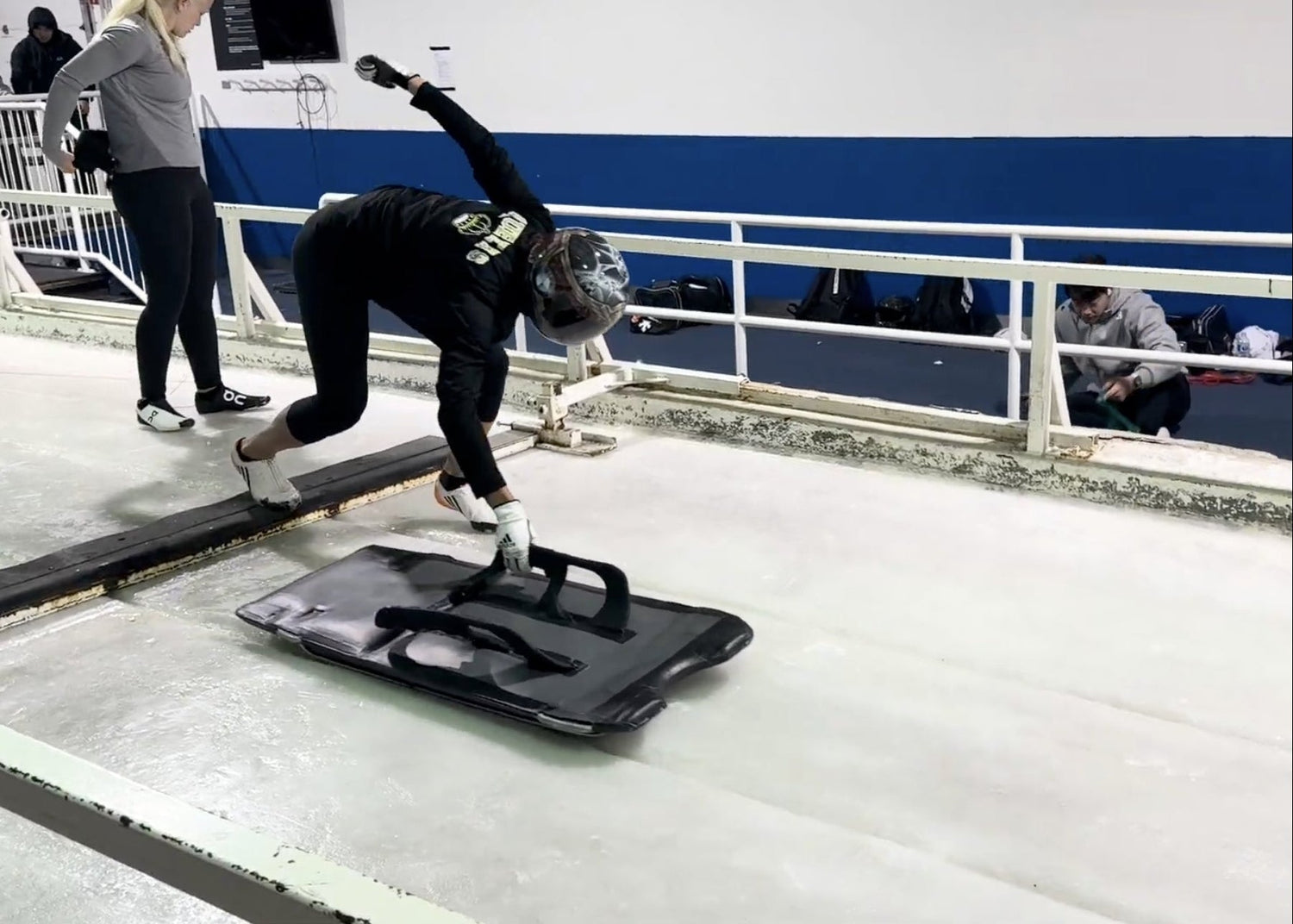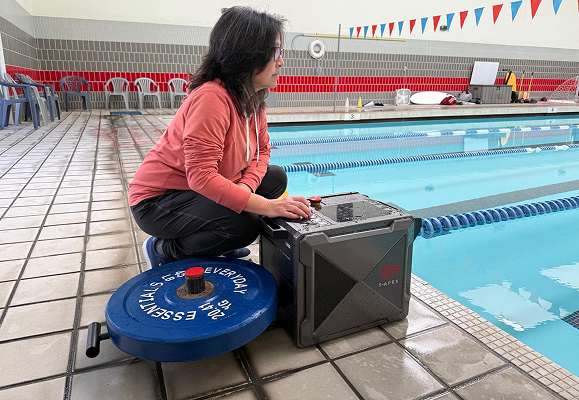From the explosive push of a skeleton start to the sharp edge of a hockey stop or a skier’s controlled turn — winter sports demand instant power, balance, and rhythm under extreme speed. Training those split-second movements on land, however, has always been the hardest part.

T-APEX in Action: Training What Matters
That’s where T-APEX comes in — bridging the gap between gym strength and on-ice precision. Its intelligent motor-driven system adjusts direction, load curve, and movement rhythm in real time, allowing athletes to simulate true winter-sport mechanics safely and accurately.
Unlike traditional sleds or bands, T-APEX can reproduce eccentric overload and multi-planar movement — the two hardest yet most essential abilities to train for sports like skeleton, hockey, or alpine skiing.
Beyond explosive starts and resisted sprint training — as shown in athlete sessions — T-APEX also enables four advanced modes of on-land conditioning that directly translate to on-ice and on-snow control. These focus on resistance precision, rhythm maintenance, and eccentric stability — areas that conventional tools rarely reach.
| Training Focus | Purpose | T-APEX Setup |
|---|---|---|
| Change of Direction (COD) | Applies bi-directional load to both deceleration and re-acceleration phases, building braking efficiency and turn exit power. | “Z” or “T” path; side–rear anchors to generate multi-directional tension. |
| Lateral Power | Creates constant side-to-side resistance to strengthen hip drive and skating edge control — essential for slalom, hockey, or speed skating. | 5–8 m lateral shuffle or slide; hip-side anchor. |
| Eccentric Control (Braking / Landing) | Uses motor braking delay to create eccentric overload, helping athletes absorb and control deceleration forces safely. | Straight 10–12 m path; rear waist anchor; focus on slow controlled return. |
| Rhythm & Timing Stability | Maintains steady low-load tension to reinforce rhythm, body timing, and control during in-season or recovery phases. | 10–15 m rhythm run; waist anchor; light resistance (1–2 kgf). |
Together, these drills train the full spectrum of ice-specific power — from explosive acceleration to eccentric control and rhythm stability — turning technical precision into repeatable, measurable performance.
On-Ice Perspective: Athlete Insights
To see how these principles translate into real performance, we invited Olympic skeleton athletes Kim Meylemans and Nicole Silveira to share how they’ve integrated T-APEX into their sprint and on-ice training. Their experience shows how data-driven resistance work turns into measurable start acceleration and technical consistency.
“We’ve been using the T-APEX as part of our sprint training for the upcoming Winter Olympic season, and it’s been a great addition to our program. In skeleton, the start is everything, those first few seconds can define an entire run, so developing explosive power and acceleration is a huge priority for us.“
Data-Driven Coaching & Real-Time Feedback
Each repetition on T-APEX is visualized live on the tablet — showing a speed curve and four actionable metrics: Peak, RMS, Time to Peak, and Distance to Peak. Coaches can instantly adjust resistance, rhythm, or volume based on these indicators.
- Peak — highest velocity per rep; drop >2.5% signals set end.
- RMS — average power consistency across reps; monitors training quality.
- Time to Peak — measures acceleration sharpness and neural drive.
- Distance to Peak — shorter distance = improved acceleration efficiency.

“What we like most about T-APEX is how it allows us to work on resisted sprinting while still maintaining proper mechanics and speed. It gives us very specific feedback on power output and consistency, which helps us fine-tune both our strength and my sprint form.”
— Kim Meylemans & Nicole Silveira
Their insights echo what the data reveals: real-time metrics like Peak and RMS turn subjective “feel” into actionable feedback. Each session becomes self-correcting — helping coaches fine-tune resistance, timing, and recovery with measurable precision.
Integrating T-APEX Throughout the Season
Integrating T-APEX into a full-season plan means adjusting resistance and session focus to match each training phase — from off-season foundation to in-season control.
- Off-Season (2–3×/week): Build base strength, coordination, and eccentric control with resisted sprints and lateral work.
- Pre-Season (2×/week): Convert strength into sport-specific power through assisted overspeed and CoD drills.
- In-Season (1×/week or warm-up): Maintain output and rhythm stability with light-load eccentric sets.
T-APEX ensures continuity across all phases — evolving from base strength to precision control, and finally to rhythm stability under fatigue.
“We are able to bring it right on ice and use the resistance to aid in gaining speed in our bent over, skeleton position. We have managed to take it with us all around the world to our training and competition locations. In our training plan, we use T-APEX sessions 1–2 times a week, typically during our sprint training, and occasionally in our icehouse (on ice push work) sessions. It’s become a valuable tool for us so far!”
— Kim Meylemans & Nicole Silveira
Their approach reflects the true spirit of T-APEX — connecting training precision to competition performance, closing the loop from preparation to race-day execution.
From Training Ground to Performance Moment
Winter sports performance is built in split seconds — the start, the turn, the rhythm of recovery. T-APEX gives coaches and athletes control over every one of them. From base strength to game-day precision, it’s not just resistance — it’s intelligence.
Train what matters. Track what improves. Perform when it counts.

